#American Alliance of Museums
Explore tagged Tumblr posts
Text
alright gang, let's do a fun little thought experiment.
which city would biden have to completely annihilate before you decide not to vote for him?
for the sake of this thought experiment, let's ignore actual real-world alliances between countries. it can be london, or paris, or athens, or barcelona, or rome, or berlin, or even an american city like new york or new orleans or los angeles or honolulu. this is all a hypothetical after all.
really consider it. if you're gonna bother to yap in my notes, at least try to engage with this question in good faith. imagine opening up the news, and you see that a bomb was dropped on this city, and then the bombs never stop. imagine you had a friend there. imagine you'd had a trip planned to meet them and see the sights. imagine every museum, every historical monument, every theatre, every university destroyed. imagine that one day, you lived in a world where this city existed, and the next, it has completely ceased to be. it's effectively been pompeii-ed out of our world entirely. there is no longer a big ben, or a parthenon, or a colosseum, or what have you. there is no longer that foreign musician you loved from this city. there are no longer sweet old grannies to share old family recipes from this part of the world. there is no longer the online friend you wanted to visit. there is no longer your vacation plans.
don't hit me with, "but it's netanyahu doing this," because israel would literally run out of ammunition in weeks without the US. don't hit me with, "but trump!" because that quite literally is not the fucking question.
which city has to completely cease to exist before you even consider that this system isn't ever going to work?
if you are still planning to vote for biden, then either a) biden could drop a nuke on any city on earth and it wouldn't be a dealbreaker for you, or b) in your mind, people and places are divided into ones that are acceptable to destroy and ones that are not. or at least, there are ones that are more acceptable to destroy than others.
come up with your answer and either realize you sound like a fascist and work to change it, or embrace that you are a fascist and stop lying to us about caring about people of color.
#palestine#israel#globalize the intifada#politics#gaza#rambles#my notes are gonna fucking SUCKKKKK for the next 8000 years after this post lmao#i might log out for..... till college#had to get this out of my head though cause liberals piss me off
2K notes
·
View notes
Text
Women's Suffrage Movement

The movement for women's suffrage took many decades to obtain voting rights. Women fought for their rights via smart political strategy. Dynamic leadership attracted several generations of women – mothers, daughters, and grandmothers formed national organizations and made alliances that brought women into the political sphere. The fight intensified during World War I due to women's work outside the home to help the war effort. Women now saw themselves as fully deserving of the same rights as men.

A trio of outfits at the Daughters of the American Revolution Museum shows the evolution from the last gasp of Edwardian bulk to the short, simple dress of the Twenties. Left, a two-piece dress of about 1907 (Daughters of the American Revolution Museum). Center, a houndstooth suit of about 1914 (loan courtesy Shippensburg University Fashion Archives and Museum). Right, black and white day dress, 1925 (Daughters of the American Revolution Museum).




Exhibition vignette with the “Bear the Banner Proudly They Have Borne Before” banner, circa 1913-1920. National Woman’s Party. Belmont-Paul Women’s Equality National Monument, Washington, DC.
Purple, white, and gold were among the colors representing the movement. White dresses were worn by women as a representation of purity of thought and high-mindedness. Purple represented the vote and loyalty, constancy, and steadfastness. Gold stood for the torch that guides our way.



Ethel Wright (1866–1939) Christabel Pankhurst (British suffragette) • National Portrait Gallery, London
#fashion history#women's history#suffrage movement#women's voting rights#white dresses of the suffrage movement#colors of women's suffrage#daughters of the american revolution#late 19th – early 20th century women's fashion#the resplendent outfit art & fashion blog#ethel wright#woman artist#christabel pankhurst#suffrage fashion#historical photos
102 notes
·
View notes
Text
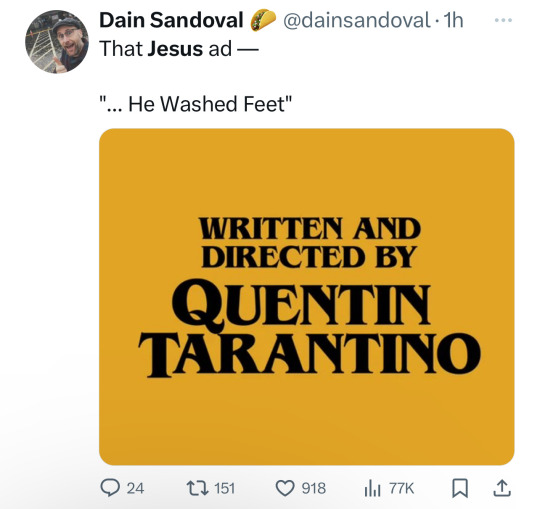





This is definitely a trend for the hateful, christofascist, religious reich. Hobby Lobby did the same thing at previous Super Bowls.


It’s right wing, Islamophobic, homophobic, anti-abortion Christian nationalism, masquerading as “caring” religion.
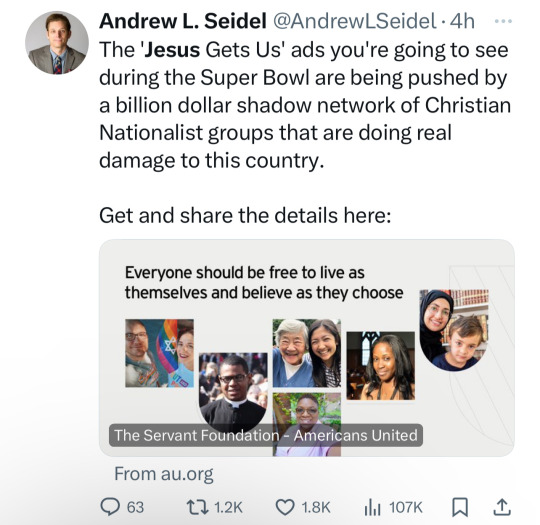
The Servant Foundation: the power behind the ads
The $20 million "He Gets Us" campaign about Jesus - is funded by an influential donor to some of the most active and litigious Shadow Network groups working to undermine church-state separation.
The Servant Foundation
The Servant Foundation, also known as The Signatry, is behind the “He Gets Us” ad campaign that debuted during the 2023 Super Bowl. Over the next three years, the Servant Foundation plans to spend “about a billion dollars” toward this public relations campaign. They’ve hired a PR firm to address, in the firm’s words, the problem of “How did the world’s greatest love story in Jesus become known as a hate group?”
Of course, they’re the cause of their own problem – not only has the Servant Foundation funded hate groups, but the PR firm, Haven, has represented these organizations. Key Shadow Network members Focus on the Family and Alliance Defending Freedom are in their portfolio. ADF is a noted anti-LGBTQ hate group that has argued repeatedly in courts that religion, and specifically Christianity, is a license to discriminate; they have one such case pending before the Supreme Court right now.
The money trail
The Servant Foundation is one of ADF’s biggest financial backers. A recent exposé reports that, “between 2018-20, the Servant Foundation donated more than $50 million to the Alliance Defending Freedom and that those contributions “were among the five largest donations given out by the foundation in each of those three years.”
Other recipients of the Servant Foundation’s billion dollars in assets include:
Nearly $8 million went to Answers in Genesis, creationist Ken Ham’s fundamentalist ministry behind the Creation Museum and Ark Encounter, an organization that has been championed by Speaker of the House Mike Johnson, a former ADF attorney.
Over $1 million was designated for the anti-LGBTQ Campus Crusade for Christ (rebranded as “Cru” since 2011).
$374,800 went to Al Hayat Ministries, an organization that seeks to “respectfully yet fearlessly unveil the deception of Islam,” and runs an Arabic-language Christian satellite TV station with the goal of converting Muslims to Christianity.
In 2020 alone, we found donations to prominent Shadow Network members American Center for Law and Justice, First Liberty Institute, and Liberty Counsel.
(continue reading)
#politics#super bowl#republicans#christian nationalism#lgbt#homophobia#christofascism#religious reich#lgbtq#jesus gets us#the servant foundation#no hate like christian love#the signatry#alliance defending freedom#adf
189 notes
·
View notes
Text

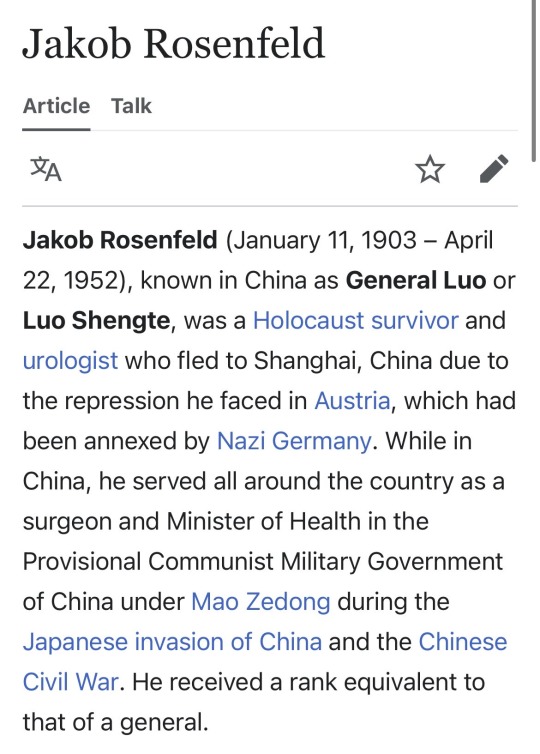
and why are israelis talking about going to china like its a threat
“Rosenfeld arrived in China with one of his brothers, but did not integrate into the Jewish community in the city. His political leanings led him to seek out the local Communists, as did a small group of other Jews. The latter included the reporter, Hans Shippe, who greatly influenced Rosenfeld’s views, and the Jewish-Austrian physician, Richard Frey, who had experiences similar to those of Rosenfeld. The Chinese Foreign Ministry website, which provides added proof of the country’s great respect for Rosenfeld, posted an article that quotes him as saying that he did not come to China to lead a comfortable life, but that he came to join the revolution. And he did in fact do that.
[…] The Chinese Communists considered Rosenfeld one of their own. He was close to the highest-ranking officials in the party, including Liu Shaoqi, who would later become the President of the People’s Republic of China after Mao Zedong’s death, and to Mao himself. He also forged a deep friendship with the Communist commander, Chen Yi, who would later go on to become the Mayor of Shanghai and Foreign Minister of China. The two shared a love of literature and poetry, took hikes together, and had long conversations in French. Chen Yi also wrote poetry, and an anthology of his writings includes a “Letter to Comrade Rosenfeld,” in which Chen Yi supports the decision made by his friend, the European doctor, to join the struggle of the People’s Army of China.
Rosenfeld believed that the Communist Party would free the Chinese people from both the Japanese invaders and the Kuomintang. In 1942, he became a member of the Chinese Communist Party, and he is still considered a national hero in China.
At the end of 1949, after the People’s Republic of China was founded, Rosenfeld decided to return to Vienna. His Chinese friends advised him to remain in China, claiming that Europe no longer had a place for him. But Rosenfeld wanted look for relatives who had survived the Holocaust. At a farewell dinner held for him before going back to Austria, Chen Yi spoke about his friend’s huge contribution to the revolution and awarded him a badge of merit.
After a short time in Austria, Rosenfeld tried unsuccessfully to return to China. He also tried to emigrate to the United States, but was denied a visa due to his ties with Communist China. In 1951, he moved to Israel, settled in Tel Aviv, and worked at Assuta Hospital. It appears that he was actually waiting for a visa to return to China, but within less than a year he died of a heart attack at the age of only 49.”
and he didnt even want to move to israel. zionism and its alliance with antisemitic movements (like american anticommunism) is the negation of the diaspora. slightly tangential to this post but the red scare disproportionately targeted jewish americans. post war us jewish institutional leaders choose to move to the right in their dedication to israel and support for the us government, betraying socialist and anti zionist american jews
150 notes
·
View notes
Text
Zoos you can see bats at:
last updated: september 29, 2024
Have a zoo to add? Please send an ask, submissions in replies and reblogs get lost amid the numerous notes this blog gets.
-This blog is not affiliated with any zoos listed here
-A question mark next to information indicates missing or unverified information (and send an ask if you can fill in or verify information, please)
-Please send an ask if there are broken links.
**Guide to Accreditation Organization abbreviations**
AZA: Association of Zoos and Aquariums
APGA: American Public Gardens Association
WAZA: World Association of Zoos and Aquariums
IMATA: International Marine Animal Trainers Association
HC: Humane Conservation
ZAA: either the Zoological Association of America or the Australasian Zoo and Aquarium Association
BIAZA: British and Irish Association of Zoos and Aquariums
AMMPA: Alliance of Marine Mammal Parks and Aquariums
EAZA: European Association of Zoos and Aquaria
CAZA: Canadian Accredited Zoos and Aquariums (AZAC in French)
BGCI: Botanic Gardens Conservation International
AAM: American Alliance of Museums
**
**
Arizona (US)
Arizona-Sonora Desert Museum (AZA) - Tucson - Pallid Bat? - https://www.desertmuseum.org/
**
Colorado (US)
Denver Zoo (AZA, WAZA, HC) - Denver - Common Vampire Bat - https://denverzoo.org/
**
California (US)
San Diego Zoo (AZA) - San Diego - Rodrigues Fruit Bat - https://sandiegozoowildlifealliance.org/
Oakland Zoo (AZA) - Oakland - Island Flying Fox, Malayan Flying Fox - https://www.oaklandzoo.org/
**
Florida (US)
Jacksonville Zoo and Gardens (WAZA, AZA) - Jacksonville - Seba's short-tailed bat, Straw-colored fruit bat, Common Vampire Bat - https://www.jacksonvillezoo.org/
Lubee Bat Conservancy (AZA) - Gainesville - Malayan Flying Fox, Variable Flying Fox, African Straw-colored Fruit Bat, Rodrigues Flying Fox, Evening Bat, Little Golden-mantled Flying Fox, Indian Flying Fox, Gray-headed Fruit Bat - https://www.lubee.org/
Animal Kingdom at Disney World (AZA) - Orlando - Malayan Flying Fox - https://disneyworld.disney.go.com/destinations/animal-kingdom/
Zoo Tampa/Lowry Park Zoo (AZA, WAZA) - Tampa - Malayan Flying Fox, Straw-colored fruit bat - https://zootampa.org/
**
Idaho (US)
Zoo Boise (AZA) - Boise - Indian Flying Fox, Ruwenzori Long-haired Fruit Bat - https://zooboise.org/
**
Illinois (US)
Brookfield Zoo (HC, AZA) - Brookfield - Rodrigues Fruit Bat - https://www.czs.org/Brookfield-ZOO/Home.aspx
Lincoln Park Zoo (AZA) - Chicago - Egyptian Fruit Bat - https://www.lpzoo.org/
**
Kansas (US)
Sedgwick County Zoo (WAZA, AZA) - Wichita - Indian Flying Fox - https://scz.org/
Topeka Zoo (AZA, WAZA) - Topeka - Indian Flying Fox - https://topekazoo.org/
**
Kentucky (US)
Louisville Zoo (AZA) - Louisville - Common Vampire Bat, Rodrigues Fruit Bat - https://louisvillezoo.org/
**
Louisiana (US)
Audubon Zoo (AZA) - New Orleans - Seba's short-tailed bat, Common vampire bat - https://audubonnatureinstitute.org/zoo
BREC's Baton Rouge Zoo (AZA?) - Baton Rouge - Indian Flying Fox - Currently in the process of regaining AZA accrediation, expecting an update in Spring 2024 - https://brzoo.org/
**
Massachusetts (US)
Capron Park Zoo (AZA) - Attleboro - Rodrigues Fruit Bat, Indian Flying Fox - https://capronparkzoo.com/
Franklin Park Zoo (AZA) - Boston - Straw-colored Fruit Bat - https://www.zoonewengland.org/franklin-park-zoo/
Stone Zoo (AZA) - Stoneham - Seba's short-tailed bat - https://www.zoonewengland.org/stone-zoo/
**
Michigan (US)
Detroit Zoo (AZA, WAZA) - Royal Oak - Straw-colored fruit Bat - https://detroitzoo.org/
**
Maryland (US)
Maryland Zoo (AZA) - Baltimore - Seba's Short-tailed Bat - https://www.marylandzoo.org/
**
Minnesota (US)
Minnesota Zoo (AZA, WAZA, IMATA) - Apple Valley - Egyptian Fruit bat, Straw-colored fruit bat, Long-haired fruit bat - https://mnzoo.org/
**
Nebraska (US)
Omaha's Henry Doorly Zoo and Aquarium (AZA, WAZA) - Omaha - Short-tailed Fruit Bat, Common Vampire Bat, Egyptian Flying Fox - https://www.omahazoo.com/
**
New York (US)
Bronx Zoo (AZA) - Bronx - Rodrigues Fruit Bat - https://bronxzoo.com/
Prospect Park Zoo (AZA) - Brooklyn - Rodrigues Fruit Bat - https://prospectparkzoo.com/
Central Park Zoo (AZA) - New York City - Short-tailed Fruit Bat, Rodrigues Fruit Bat - https://centralparkzoo.com/
**
North Carolina (US)
North Carolina Zoo (AZA) - Asheboro - Common Vampire Bat - https://www.nczoo.org/
**
Ohio (US)
Akron Zoo (AZA, APGA) - Akron - Rodrigues Fruit Bat, Seba's Short-tailed Bat, Straw-colored fruit bat - https://www.akronzoo.org/
Cincinnati Zoo and Botanical Garden (AZA, BGCI) - Cincinnati - Indian Flying Fox, Common Vampire Bat - https://cincinnatizoo.org/
Columbus Zoo and Aquarium (AZA, ZAA, AMMPA) - Powell - Large Flying Fox - https://www.columbuszoo.org/
Cleveland Metroparks Zoo (AZA) - Cleveland - Straw-colored Fruit bat, Egyptian Fruit Bat - https://www.clevelandmetroparks.com/zoo
**
Oklahoma (US)
Oklahoma City Zoo and Botanical Gardens (AZA, BGCI, AAM) - Oklahoma City - Seba’s Short-tailed Bat - https://www.okczoo.org/
**
Oregon (US)
Oregon Zoo (AZA, WAZA) - Portland - Rodrigues Fruit Bat, Straw-colored Fruit bat - https://www.oregonzoo.org/
**
Pennsylvania (US)
National Aviary (AZA) - Pittsburgh - Malayan Flying Fox - https://www.aviary.org/
Philadelphia Zoo (AZA) - Philadelphia - Rodrigues Fruit Bat, Common Vampire Bat - https://www.philadelphiazoo.org/
Pittsburgh Zoo (ZAA, HC, AMMPA) - Pittsburgh - Jamaican Fruit Bat - https://www.pittsburghzoo.org/
**
Texas (US)
Cameron Park Zoo (AZA) - Waco - Jamaican Fruit Bat - https://www.cameronparkzoo.com/
Dallas World Aquarium (AZA, WAZA) - Dallas - Common Vampire bat, Seba's Short-tailed bat - https://dwazoo.com/
Houston Zoo (AZA) - Houston - Seba's Short-tailed Bat - https://www.houstonzoo.org/
San Antonio Zoo (AZA, ZAA) - San Antonio - Large Flying Fox, Seba's Short-tailed Bat - https://sazoo.org/
**
Tennessee (US)
Memphis Zoo (AZA, WAZA) - Memphis - Common Vampire Bat, Seba's Short-tailed Bat, Egyptian Fruit Bat, Bulldog Bat - https://www.memphiszoo.org/
**
Utah (US)
Hogle Zoo (WAZA, AZA) - Salt Lake City - Species? - https://www.hoglezoo.org/
**
Virginia (US)
Metro Richmond Zoo (ZAA) - Moseley - Straw-colored Fruit bat, Indian flying fox - https://metrorichmondzoo.com/
**
Wisconsin (US)
Henry Vilas Zoo (AZA, WAZA) - Madison - Seba's Short tailed bat - https://www.henryvilaszoo.gov/
Milwaukee County Zoo (AZA) - Milwaukee - Common Vampire Bat, Straw-colored Fruit Bat - https://milwaukeezoo.org/
Bay Beach Wildlife Sanctuary - Green Bay - Not a zoo, included here because they are open to the public; it is the largest park in the Green Bay Park System and the home of the second largest wildlife rehabilitation program in the state; Accreditation unclear, Sanctuary is run by the city government - Various species native to the area - https://greenbaywi.gov/1418/Bay-Beach-Wildlife-Sanctuary
**
Washington (US)
NO LONGER ANY BATS ON EXHIBIT IN ANY ZOOS IN THIS STATE
**
United Kingdom
Northumberland Zoo (BIAZA) - Morpeth, Northumberland - Livingstone’s Fruit Bat - https://www.northumberlandzoo.co.uk/
Chester Zoo (BIAZA, WAZA, EAZA) - Upton-by-Chester, Cheshire - Rodrigues Fruit Bat - https://www.chesterzoo.org/
West Midland Safari and Leisure Park (BIAZA, EAZA) - Bewdley, Worchestershire - Rodrigues fruit bat, Seba's short-tailed bat - https://www.wmsp.co.uk/
Jersey Zoo (BIAZA) - Jersey - Livingstone's Fruit Bat - https://www.durrell.org/visit-jersey-zoo/
ZSL London Zoo (EAZA, BIAZA) - London, England - Rodrigues fruit bat - https://www.londonzoo.org/
**
Australia
Taronga Zoo (ZAA) - Sydney, New South Wales - Ghost Bat - https://taronga.org.au/sydney-zoo
Perth Zoo (ZAA, WAZA) - Perth, Western Australia - Ghost Bat - https://perthzoo.wa.gov.au/
Tolga Bat Hospital - Atherton, Queensland - Not a zoo, they are included here because they do tours of their facilities; They are accredited by different organizations than zoos. - Various species native to Australia - https://tolgabathospital.org/
**
Czechia
Prague Zoo (EAZA) - Prague, Czechia - Straw colored fruit bat - https://www.zoopraha.cz/en
**
Canada
Toronto Zoo (AZA) - Toronto, Ontario - Straw-colored fruit bat - https://www.torontozoo.com/
Biodôme (CAZA, WAZA, AZA) - Montreal, Quebec - Jamaican Fruit bat, Seba's Short-tailed bat, Pallas's Long-tongued bat - https://espacepourlavie.ca/en/biodome
Vancouver Aquarium (AZA, CAZA, AMMPA, HC) - Vancouver, British Columbia - Jamaican Fruit Bat - https://www.vanaqua.org/
Assiniboine Park Zoo (AZA, WAZA, CAZA) - Winnipeg, Manitoba - Seba's Short-tailed Bat, Indian Flying Fox - https://www.assiniboinepark.ca/zoo/visit/hours-and-rates
**
Croatia
Zoo Zagreb (EAZA?) - Zagreb - Egyptian Fruit Bat - https://zoo.hr/english/
**
286 notes
·
View notes
Text
France, America and the Love for 'Liberté'
Warning: wall of text. This post is nearly 5000 words long.
TL; DR: France contributed to the formation of America. Why did Himaruya design France like that? Some relevant information about the relationship between France - UK and France - US.
Part 1: The Love for 'Liberté'
I've talked about this a lot, but now I'll summarize it a bit. Basically, it's not without reason that I assume that France played a huge role in giving birth to America.
The reason the French supported America in the war for independence from Britain included 2 reasons:
1. Competition with England. This is too obvious.
2. The French Enlightenment caused the French to risk their lives in North America. Their help to Americans is to realize their dreams and ideals of liberty and republican government. (Museum of the American Revolution, unknown)
Helping America is not only the French monarchy, but also the French people. The Americans' determination to make a revolution created a great wave throughout France (Office of the Historian, unknown). It can be said that America was born from the French Enlightenment movement. Americans were directly taught by the French about ideas about human equality. At the heart of every American uprising is Enlightenment thought. In addition, precisely because Enlightenment ideas were transmitted directly from France to America, it was from America that this idea was spread across the Atlantic (Marks, 2018).
We can mention some typical French figures who participated in the American Revolution and some Americans who were influenced by France. The most famous Frenchman of the American Revolution was the Marquis de Lafayette. He joined this war at the age of 19, with the belief that he would bring glory and justice to America, even rising to the rank of major general in American army (Shaw, unknown). Pierre Charles L'Enfant, the designer of Washington DC, was French (Museum of the American Revolution, unknown). Thomas Jefferson, America's founding father, a native of England, was a true francophile. He was one of the first US ambassadors extraordinary and plenipotentiary to France, and is extremely passionate about the French lifestyle (The French Life, unknown). Benjamin Franklin was the main factor why the French were inspired and fervently supported the American Revolution (Office of the Historian, unknown). “Give me liberty or give me death!”, Patrick Henry's declaration at the Second Virginia Convention (1775) was influenced by the saying "Man is born free and everywhere he is in chains.” by French writer Jean-Jacques Rousseau (Mcgee, 2020)
The American Revolution is called the Second Hundred Years' War between France and England by some historians (Shaw, unknown). From 1775 to 1777, France secretly supported America by providing weapons and money to America (The Editors of Encyclopædia Britannica, unknown). When the Franco-American Alliance was signed in 1778, France openly supported the United States, and "brought its full military might against Britain" (Shaw, unknown). In terms of the treaty, “peace could be arrived at only by mutual French and U.S. consent" (The Editors of Encyclopædia Britannica, unknown). The British attempted to divide the French-American alliance and failed, and only when Britain and France resolved their differences could the Americans sign the treaty of Paris (Mcgee, 2020). French support played an important role in the British surrender at the Battle of Yorktown in 1781 (Office of the Historian, unknown). In the Siege of Yorktown painting hung in the US Capitol, the Bourbon flag and the American flag are placed parallel to each other. Admiring the French was even considered “a patriotic duty” for American colonists (Kaplan, 1956, p.34).
In order for America to be independent, the French army at that time gathered troops to fight the British army in colonies around the world. Because Britain had to spread human resources and resources across battles in other colonies, America became a secondary problem, meaning that if Britain did not let go of the 13 colonies in North America, the entire British empire would collapse. (Shaw, unknown). In 1776, France transferred to the United States about 300,000 pounds of gunpowder, 30,000 muskets, 3,000 tents, more than 200 cannons and clothes for 30,000 soldiers (Museum at Yorktown, unknown). If only before 1777, the amount of money that France provided to America was 1.3 billion livres, the American army was completely dependent on France. It was the 1778 treaty between America and France that gave the Americans legitimacy, thereby receiving additional support from other European powers. After that, 12,000 French soldiers, 22,000 naval personnel and over 63 warships participated in the war (Mcgee, 2020). In an unofficial source, meaning I read from a group of American friends, the statistics show that more French people died because of the American war of independence than Americans died because of their homeland (I haven't found an official source for this detail yet, so don't take it as fact. I would appreciate it if someone could fill me in on this detail). The costs were poured into North America causing France's economy to collapse and the French Revolution to occur, ending the French monarchy (Shaw, unknown). My opinion that France is a mother who sacrificed her life to give birth to her American child is not without basis.
After the defeat at Yorktown, when the British surrendered, they simply marched back toward the French, thereby denying the efforts and role of the Americans in this war of independence. French Major General de Lafayette was very angry, so he ordered his team to play Doodle Yankee (a song composed by the British to mock the French). Immediately, the British turned around and looked at the Americans. (Fleming, 2013)
At this point I will stop talking about the American Revolution, let's talk about other factors throughout the diplomatic history between America and France:
- The relationship between these two countries is not always smooth, even quite contradictory, but it is a fact that France is the first and oldest ally of America and these two countries have never really conflict with each other.
- French historian Édouard de Laboulaye proposed the idea of gifting the Statue of Liberty to the United States in 1865 to commemorate 100 years of American independence from England (1865 was the year the United States abolished slavery). Then, sculptor Frédéric-Auguste Bartholdi designed this statue. Journalist Joseph Pulitzer wrote: “It is not a gift from the millionaires of France to the millionaires of America, but a gift of the whole people of France to the whole people of America.” (Little, 2021)
- Many times America and France almost became enemies, but fate did not let these two countries stand on two different front lines. The most spectacular case of reversal is about New Orleans. After Thomas Jefferson became president, he wrote: “There is on the globe one single spot, the possessor of which is our natural and habitual enemy. It is New Orleans, through which the produce of three eighths of our territory must pass to market.” (Worsham, 2002). That is France, the country that controls all of Louisiana including New Orleans. However, no one expected that the United States only needed to buy the entire Louisiana region from France in 1803 and the problem would be solved. Sold by France to Louisiana, America doubled in size, giving America access to the world's largest inland waterways. Tim Marshall wrote that, thanks to this purchase, “the roadmap to American greatness flowed.” (Marshall, 2016) (I read this in Vietnamese translation, and I translated it into English. Therefore, the quote may not be very accurate. Reading this gave me goosebumps)
- In 1964-1966, conflicts between America and France increased. During these years, France has continuously made statements and policies contrary to US policies, causing America to continuously promote anti-French media. Regarding this move, the French president at that time said: "It is in the United States' interest to have by their side not a satellite, but an independent ally, always by their side in times of danger." (Journoud, 2011) (I read this in Vietnamese translation, and I translated it into English. Therefore, the quote may not be very accurate). In 1966, France withdrew from the NATO military command structure. The French President demanded that all NATO bases leave French territory. NATO headquarters has been moved from Paris to Brussels. (CVCE.eu, unknown)
Keep in mind that most of the sources I read are American and British. There is only one source I got from the French. This means there is no French agenda here.
Part 2: Why, Himaruya?
I will add a little information about the cold period between France and America. I will no longer talk about France and America from Hetalia's perspective, but about France and America in reality. The purpose of part 2 is to answer the question: why did Himaruya design France like that? In this section, I only speak about the knowledge I have gathered without citing sources. I'm too lazy to find the source for this knowledge. So it could be wrong. You can read to learn more for yourself.
Some information I summarized from the book "De Gaulle et le Vietnam" by Pierre Journoud, some information I collected from other articles (which I did not save). The book "De Gaulle et le Vietnam" is a massive work, and an attempt at reconciliation between France and Vietnam, which describes the process of French President de Gaulle from a colonialist to a supporter of Vietnam's independence. This is a book sponsored and published by the French Embassy in Vietnam and recommended by scholars in Vietnam.
Okay, now let's get to the main story:
In official Hetalia, author Himaruya tends to "deny" the character France. The reason is because this person is an international student in New York, so he is greatly influenced by the American perspective on France. A large portion of Americans think of France as a promiscuous, sex-addicted b*tch. Why? This has an unfortunate history. There are 3 factors:
1. World War II. Allied troops landed in France... you know, during wartime, hunger, there will inevitably be prostitution with soldiers to get food. At that time, prostitution was widespread and terrible. I read an article that said this: Anglo-American troops saw the liberation of Paris not only as a symbol of Europe's freedom from Germany, but also as "their entertainment playground". When American troops arrived at France's Petit Palais, the authorities also gave free condoms to American soldiers so they could go with prostitutes there. The impression of such a place of debauchery and prostitution left a very deep impression in the minds of the British and Americans about the image of France being associated with debauchery and prostitution.
But the fact that the Allied troops came to France and brought back to their country such a bad impression of women was not the end. That myth should have disappeared in 1 or 2 generations. Everything continues to the second problem I will talk about later.
2. Indochina War.
That's right, my country is involved. During the First Indochina War, France returned to Vietnam, but after the battle of Dien Bien Phu, it was defeated and withdrew. America jumped in with the anti-communist flag, with the goal of not letting communism encroach on even one inch of land in the world, because they think that if Vietnam becomes a socialist country, the domino effect will turn the entire Pacific Ocean into a communist ocean.
What is worth mentioning here is that, after the French were defeated in Vietnam, they learned from the experience that the Vietnamese people needed independence more than anything and that Vietnamese nationalism was very strong, so the war Indochina was fundamentally wrong from the start. After France had completely accepted that it had lost and was wrong in Vietnam, they saw America jumping into Vietnam as nothing more than a new form of colonialism, and the Republic of Vietnam as nothing more than an American puppet. So at that time, France looked down on the Republic of Vietnam very much, and even that look increased when Ngo Dinh Diem died. President de Gaulle, after France's defeat in Vietnam, began to be more aware of the so-called Vietnamese nationalism and sympathized with the government of the Democratic Republic of Vietnam. He has repeatedly advised American presidents that with this situation they will be completely defeated in Vietnam and they should withdraw soon. Kennedy listened but did not withdraw, Johnson showed open hostility towards de Gaulle, Nixon escalated the war to a terrible intensity.
Let's go back to the world war a bit. World War II N4zi Germany occupied France and established the French Vichy government. General de Gaulle could not accept the French Vichy government, so he went to England to gather French forces abroad and in the colonies to establish the France Libre government in exile. Winston Churchill absolutely liked Charles de Gaulle and supported France Libre a lot (Churchill himself was a Francophile), but Roosevelt hated de Gaulle very much, made things difficult for France Libre and even recognized the Vichy government, because Roosevelt felt de Gaulle's nationalism was too strong, and under de Gaulle's influence, France would not "listen to" America after the war ends (and indeed he was not wrong). Britain needed America to fight N4zi Germany, and always advocated peace with America, so Churchill was torn between Roosevelt and de Gaulle. De Gaulle was a proud man, so even though he sought refuge in England as an exile, de Gaulle did not accept Britain's excessive demands about future post-war France for aid in the present. As a result, Churchill and de Gaulle argued a lot, hurled the harshest words at each other, and even almost considered each other enemies even though the two sides were allies and France was more or less relying on Britain.
On one occasion, de Gaulle and Churchill argued with each other. When de Gaulle went back, people asked de Gaulle what he and Churchill had argued about, and de Gaulle said: I asked him, "who did you choose in the end?", then he replied, “between Europe and the ocean, I will always choose the ocean”, I had nothing more to say. When people asked Churchill, Churchill only sadly said that de Gaulle was just losing his temper and needed to cool his head.
America's attitude of rejecting France Libre continued until the communist movement in France grew strong (at that time, France was the place of the largest communist party in Europe) and attempted to overthrow France Vichy. America did not want communists to take power in France, so they reluctantly nodded and supported de Gaulle's France Libre. However, everything was still extremely forced, because the head of France Libre, de Gaulle, was only informed about the D-Day landings two days before. De Gaulle was extremely angry but could do nothing.
Through it all, de Gaulle seemed always to be wary of Anglo-Saxon circles. Since France gained independence, the policy of French president had always been to try not to depend on any country. He advocated for France to independently develop nuclear weapons, withdrew France from command of NATO, forced allied troops to withdraw from French soil, made peace with the Soviet Union, established diplomatic relations with the People's Republic of China and vetoed Britain's entry into the EU. America knew de Gaulle did not want to depend on America and this was a friction dating back to the World War.
Returning to the Indochina war and France's opposition to US intervention in Indochina. Through the experience of France's failure, de Gaulle saw very clearly that America would soon be bogged down and defeated in Vietnam. De Gaulle himself did not like the government of the Republic of Vietnam because the Republic of Vietnam was too dependent on the United States. At that time, France bluntly made statements that France did not support US intervention in Indochina, that everything was wrong (something very few capitalist governments dared to do at that time. And according to what I read, at that time about 60-80% of the overseas Vietnamese people there did not like the government of the Republic of Vietnam), and even withdrew France from SEATO, acting as an intermediary diplomatic channel with the Democratic Republic of Vietnam. With de Gaulle's "separation" moves, America lost all patience. To America, France is like a crazy person who never listens to America's wishes. And America believed that France's actions were because France was bitter towards them because they had taken France's place in Indochina, and America also brought up the old story of de Gaulle and Rooselvelt during the World War, claiming that de Gaulle was really a exploitative and ungrateful for America's help, that Roosevelt did not misjudge back then.
America believed that France was a fool, out of date but always liked to criticize America, but America could not take any tough measures or boycott France. France is the gateway to Europe. At that time communism was strong, America could not take such risks. So America used the media. During Johnson's entire period, the media and news always smeared and ridiculed France (The "white flag" meme is one of them). The Republic of Vietnam at that time also had a case of young men attacking the French embassy and destroying the works left by France.
Of course, among the media measures back then was the myth of prostitutes from World War II. America had dug up the prostitution narrative (which I mentioned in part 1), promoting that sexualized agenda in our showbiz world (“Voulez vous coucher avec moi ce soir?” actually from an American movie, not French). Since then, this myth has spread throughout the world and is especially prevalent in Anglo-American and Anglo-Saxon circles.
3. There is one more factor but I haven't learned much about this case. That is a big part of what makes up this stereotype France = b*tch, which also comes from the feudal period of France. At that time, the case of nobility couples getting married but both having affairs and debauchery and luxury started from the French palace of Versailles. King Louis XIV was the reason for this. Louis XIV believed that when he promoted adultery among the nobility, everyone would turn to "fight" with each other, thus no longer having the mind to overthrow him, and his position would be more secure. And the consequences of that debauchery were very horrifying, it gave birth to a series of generations of philosophers and literati who were sick, dissatisfied, and immersed in pleasure, lasting from the feudal period, to the period of Enlightenment philosophy, the French Revolution, flared up again in the 70s and 80s and that disorder and sickness still affects France to this day.
Part 3: Some related information and personal opinions
I would like to add a little more of my thoughts: During World War 2, America was in a position to help France. Because if America had not jumped into the war, instead of the Allies liberating France, it would have been the French Communist Party that would have overthrown the f4scists. France was one of the European countries most sympathetic to the red wave, so much so that at that time the French Communist Party was the largest Communist Party in Europe. There were many famous French philosophers who are Marxist.
Roosevelt clearly considered ignoring France Libre to recognize the Vichy government if the French red wave was not so strong. So at that time, I think, sooner or later France would be able to overthrow the f4scists, but the problem was which side to overthrow, America jumping in was also partly to competed with the French Communist Party. Imagine America jumping in without time and the Communist Party taking power in France, I don't know how much the world situation would change after that.
General de Gaulle was almost obsessed with the saying "between Europe and the ocean, I will always choose the ocean". After he received that answer from Churchill, his attitude towards Britain almost completely changed.
Later, France turned to join hands with its old enemy aka Germany to establish the European Coal and Steel Community mainly to counterbalance the influence of Britain and America, even France was a direct veto country when Britain applied to enter the EEC. This was like a slap in the face of Britain. The British are still very tormented about this case, saying "I saved you from them, I emptied the treasury for you, but in the end you would rather go with them than with me.". But in fact, the fact that France established the EEC with Germany in the first place was due to Britain's previous answer. It's just that the British and American media, when mentioning the EEC and calling France ungrateful, often don't mention Churchill's quote.
When General de Gaulle came to England in exile, the reason General de Gaulle did not compromise with Britain's demands was because France was "too weak to bow" at that time. This sentence makes me think that France is too proud to be submissive or bow its head, when even in exile, France was still determined not to bow to England, and later they did not bow to America the way Britain had bowed to America for nearly a century. Thanks to that, compared to other European countries, France now has a certain independence and is not too dependent on the US, and for the US, France is a relatively "difficult" ally. This is an "ally", not a "junior" labeled an ally, not the type that obediently listens to the US. America was very bitter about this and cursed France for being ungrateful, France only replied: "It is in the United States' interest to have by their side not a satellite, but an independent ally, always by their side in times of danger."
To talk about Churchill's answer, in fact, Britain becoming dependent on America was a rather bitter process for the British empire.
After the end of WW2, it was America that broke Britain's imperial position. If you read about West Asia (also known as the Middle East), a large part of the West Asian conflict took place because the US took over all of Britain's interests in the oil issue in West Asia.
A little background: The essence of the British empire and colonial system was market protection. That means the market between the mother country and the colony is a closed market, the goods of the mother country and the colony will be exported and consumed with each other, but will not export or import additional goods from a third country.
There is a saying that in WW2, the Allies won thanks to "Russian blood, British intelligence and American steel". That means World War II was won thanks to a large amount of weapons produced in the US. During World War II, America gradually realized their production potential, they themselves did not expect they had such great production power. The problem was that after the war ended, they lost their trading market. Their production capacity was still so strong, but they did not know where to export their goods. So they turned their attention to the British colonies: at that time Britain was accounting for 25% of the world market.
25% of that market was monopolized by the UK. So how can the UK released 25% of that market? American answer: Breaking Britain's imperial position, breaking Britain's monopoly on exporting goods to the colonies. At that time, Britain was in debt of more than 200% of GDP, the treasury was completely exhausted, the country was in ruins and British colonies began to rebel. The UK was in a desperate situation. In the end, Britain had to bow to America, aka, from the empire on which the sun never sets came to the Commonwealth. Britain withdrew from that 25% market share, and the former British colonies were now encroached by the United States to gain market share. That's why Britain was so bitter when France created the ESEC/EEC. Because the position from an independent empire to becoming a subordinate of America was something the British were forced to do, not wanted.
Part of the reason why Britain can somewhat accept a junior partnership with the US is because America's leaders are all of British descent. During the American Revolution, even after the revolution was successful, Americans still honored their old "motherland". Why is that, because in fact the leaders of the uprising were all white people from England. England has a characteristic that in any colony that has white British people, the people of British descent in that place are treated well by the mother country. When Churchill told de Gaulle that he would rather choose the ocean than choose Europe, perhaps he himself had the thought that Britain would decline, but would rather be America's subordinate - where there are England's own white British descendants (so somehow England continues its glory) rather than being equals with European countries.
In Charles de Gaulle's War Memoirs, the author said this: before WW2, Berlin was getting stronger and the risk of Germany going to war was in sight, but London ignored Berlin because London wanted that when France and Germany went to war, France would depend on Britain.
That's why when WW2 happened, de Gaulle argued with Churchill a lot and refused to compromise because de Gaulle did not want to fall into the same situation as London thought before, which meant becoming a France dependent on Britain. This has led to the UK moving towards the US, aka a "globalized" UK, while France forms the ESEC/EEC with Germany so that Europe can counter the Anglo-Saxon world. And another point in current French politics is that now there is a large part of the French demanding Frexit, because French agriculture has been severely damaged by the EU.
In general, the more I read about the Anglo-French relationship, the more complicated it became. French assumed that WW2 happened partly because Britain deliberately made France dependent on Britain (I'm not saying that England actually thought that way. I mean that from the French perspective, they felt that way). Then, when things really happened like that, Britain exhausted its national treasury in WW2 (for France and for themselves). However, when questioned by de Gaulle, Churchill replied that Britain would always look to the ocean instead of choosing Europe. Because of receiving such an answer, France would rather establish an EEC with Germany than be pro-British after WW2. Then the British became angry with the EEC. Then Britain asked to join the EEC. France vetoed Britain many times. Britain joined the EU for a while then wanted to leave. Now some French people want to leave as well.
-
Oh, what a long story. I wonder how many people read this entire post. I'm from a country that's not France, England or America, so except for a bit of patriotism that I expressed in part 2, I think this is a perspective that isn't too biased towards either side. Personally, I love America very much, America is strong and brave, that's the truth. America's flaws are obvious, but its strengths are equally beautiful and shining. This is a country with many defects and advantages like any other country. So I don't agree with the way everyone antagonizes America as a villain.
Because more than half of this article is not properly sourced, but is written based on my memory and opinion, I welcome your additional comments and polite corrections. I would like to emphasize again, you should not refer to this post as "fact", always fact check everything in this post.
Thus, the relationship between America and France is more complicated than most people think. Not only England, France also contributed greatly to the birth and shaping of America. Through the above events, we can conclude that the American spirit of Liberty was completely inherited from France. France is the country that America (even if he wanted to) could never hate (and vice versa). Even if you don't look at it from the perspective of France being America's mother, it can at least be affirmed that France is America's "tutor". Without France, there would be no America today. America's existence is a continuation of England's ambition and an honoring dignity of France.
To conclude the post, I would like to mention that I once saw a Japanese artist post a tweet like this:
"I found out that Frank means 'free man'
So, from ancient times until now, he hasn't changed at all."
References:
CVCE.eu (unknown). France and NATO. 31/12/2023: https://www.cvce.eu/en/recherche/unit-content/-/unit/02bb76df-d066-4c08-a58a-d4686a3e68ff/c4bbe3c4-b6d7-406d-bb2b-607dbdf37207
Fleming, T. (2013). A short history of "Yankee Doodle". 31/12/2023: https://allthingsliberty.com/2013/12/short-history-yankee-doodle/
Journoud, P. (2011). De Gaulle et Vietnam. Éditions Tallandier.
Kaplan, L. S. (1956). The philosophes and the American Revolution. Social Science, 31(1), pp. 31-35. https://doi.org/10.2307/41884421
Little, B. (2021). Why the Statue of Liberty Almost Didn't Get Built. 31/12/2023: https://www.history.com/news/statue-of-liberty-funding-pulitzer
Marks, J. (2018). How Did the American Revolution Influence the French Revolution?. 31/12/2023: https://www.history.com/news/how-did-the-american-revolution-influence-the-french-revolution
Marshall, T. (2016). Prisoners of Geography. Elliott & Thompson.
Mcgee, S. (2020). 5 Ways the French Helped Win the American Revolution. 31/12/2023: https://www.history.com/news/american-revolution-french-role-help
Museum at Yorktown (unknown). How did the French Alliance help win American Independence?. 31/12/2023: https://www.jyfmuseums.org/learn/research-and-collections/essays/how-did-the-french-alliance-help-win-american-independence
Museum of the American Revolution (unknown). France and the American Revolution. 31/12/2023: https://www.amrevmuseum.org/france-and-the-american-revolution
Office of the Historian (unknown). French Alliance, French Assistance, and European Diplomacy during the American Revolution, 1778–1782. 31/12/2023: https://history.state.gov/milestones/1776-1783/french-alliance#:~:text=Between%201778%20and%201782%20the,protected%20Washington's%20forces%20in%20Virginia
Shaw, T. (unknown). France in the American Revolution. 31/12/2023: https://www.battlefields.org/learn/articles/france-american-revolution
The Editors of Encyclopædia Britannica (unknown). Franco-American Alliance. 31/12/2023: https://www.britannica.com/event/Franco-American-Alliance
The French Life (unknown). Thomas Jefferson: Founding Father & Francophile. 31/12/2023: https://www.thefrenchlife.org/2017/10/11/famousfrancophile/
Worsham, J. (2002). Jefferson Looks Westward. 31/12/2023: https://www.archives.gov/publications/prologue/2002/winter/jefferson-message.html
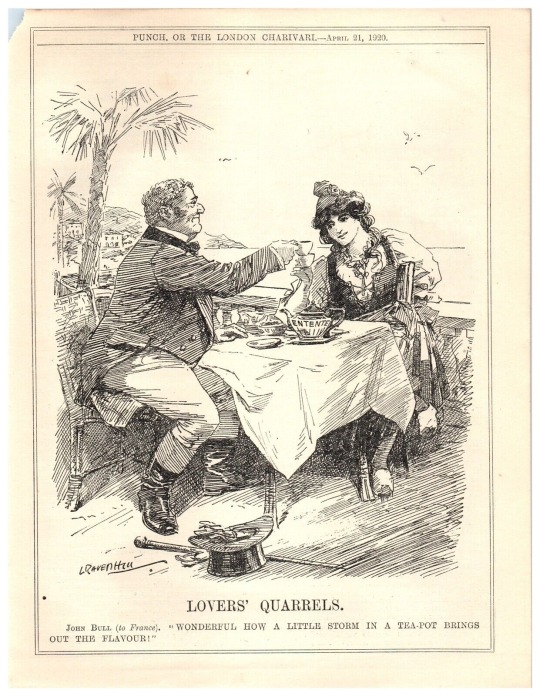
#fruk#aph france#aph fruk#aph england#hws fruk#hws france#hws england#ukfr#aph ukfr#hws ukfr#aph america#hws america
39 notes
·
View notes
Text










Thomas Hart Benton (1889-1975, American)
Born in Missouri into a politically influential family in 1889, Benton found inspiration among working class communities in rural America. A prolific painter, sculptor, printmaker and gifted storyteller, Benton is credited with leading the Regionalist movement in the United States early in his career. He has long been celebrated as the most innovative practitioner of mural painting depicting American life.
Benton studied at prestigious institutions including the Art Institute of Chicago in 1907 and the Académie Julian in Paris, where he met fellow American painter, Synchromist Stanton Macdonald-Wright. Settling in New York in 1911, Benton’s work remained largely abstract until the early 1920s. On a 1924 trip home to visit his father, he was inspired to revisit his midwestern roots and began painting American rural subjects such as life in coal mines, steel mills and cotton fields. The influence of Spanish Old Master El Greco is evident in Benton’s naturalistic style, sculpted figures and fluid lines. While the rhythmic distortions of Benton’s compositions were informed by his European study, his work reflects a vibrant diversity that is distinctly American.
Benton was the first artist to be featured on the cover of Time magazine and his murals hung at an early site of the Whitney Museum of American Art. It was during this time that Benton formed a close alliance with his student - and frequent guest at his Martha’s Vineyard studio - Jackson Pollock.
https://schoelkopfgallery.com/art.../129-thomas-hart-benton/
23 notes
·
View notes
Text

Hi everyone and happy weekend! I'm drowning at work, but I wanted to put out a Compendium update—thank you to everyone who submitted! I don't think I missed anyone but, if I did, I'll update accordingly. ✨
As of 08/10, the following communities have been added to Sea's Community Compendium for XIV Creatives.
LARGE-SCALE COMMUNITY DISCORDS / SPACES
Final Fantasy XIV Ontario — This server was created to connect gamers in (or near) Ontario, Canada who love playing Final Fantasy XIV. Events include monthly map nights and irl meetups!
COMMUNITY FOCUSED / EVENT SPACES
Dragonhead — An open-world roleplay event for Ishgardians (and their neighbours).
Echelons of Etheirys — A community fostering political and court life roleplay in the world of Final Fantasy XIV, featuring regency-inspired tropes and themes; located on the North American data centre.
Buscarron's Druthers — A weekly roleplay community effort to encourage in-character, open-world engagement in the South Shroud and beyond.
The Bloodsands — Interested in combat RP? We have the place for you!
Lark's — An Ishgardian club for men.
The Regency — A gentleman's club.
Eorzean Museum Network — A network of free, player-run, venues; encouraging, supporting, and growing cultural venues and events anywhere in the FFXIV community.
Azure Moon Lounge — A welcome respite from the elements, the room is always cool and the drinks are plenty. Hosted by @rhela-xiv.
MISC
Compendium of Non-Weapon Held Objects — This is an ever-growing compendium of non-weapon held objects found in FFXIV for modders and gposers to reference. It includes a description of the object, the set/base/variant for adding it in Ktisis/Anamnesis/Brio, as well other technical information. This database is currently maintained by Nhaneh, Ainyan, and Pointyhats.
Have you thought about joining our Tumblr Community? You can find it here!

Want to submit? You can either fill out the google form here or send me an ask with the relevant information!
Is my space suitable for the Compendium? Most of the time, yes! Below the read more is some more information/stipulations. This is all publicly available on the document.
Below are the following things I do not accept on the Compendium:
Personal/Single-Character LFC ads. (Though these get posted to the SEAFLOOR Tumblr Community when I find them!)
Content intended for or can be used for bullying, harassment and OOC gossip. E.g. ‘Secrets’ blogs, receipts, callout posts, etc. This does not include IC tabloid blogs or other ventures used to generate roleplay.
Communities that do not have an RP/writing element (large-scale exempt).
Anything I find personally distasteful or goes against the spirit of this project.
Common-sense rule applies.
I want to put my community on the Compendium but we have an application process. Is this okay?
Yes! Just note somewhere in your application that's a requirement. The only thing that is mandatory for the Compendium is that you must be open to new members or have a public-facing/accessible facet. There's no point advertising a community if no one can join it in some way!
I want to put my Community on the compendium but I only have x number of members —
Also totally okay! People don't start with large communities. Activity is a must but, whether your server has two or two thousand members, if you're looking for new people to join, I'd love to help you find people.
I want to put my community/resource on the Compendium but I worry its too niche?
Okay, and? If your Eorzean Fishing Alliance has four members but you roleplay every second weekend, I still want to know about it. The same goes for resources; if it's relevant to the game, it'll be useful to someone.
How active does a community need to be?
If you find a community has not been active in about two/three months, send me a message and I'll take a look at it. Communities have ebbs and flows, especially event spaces that may take hiatuses depending on member interest/life events. I'm not strict in my implementation provided a space isn't dead. If a link or anything is broken, contact me asap!
I have [insert a question not stated here]?
No drama! Send me an ask or use the #Compendium channel in my Discord!
#final fantasy xiv#ffxiv#ffxiv community#final fantasy xiv roleplay#ffxiv roleplay#。・゚゚・ — sea speaks#。・゚゚・ — sea's community compendium
28 notes
·
View notes
Text
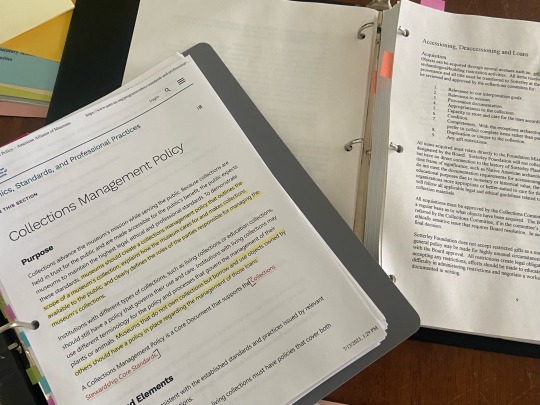
I've gotten really interested in collections policies. I've had a little experience in this area, so my supervisor has directed me to updating these thing. Now that I've updated the policy as best I can (according to the American Alliance of Museums guidelines), I'm working on updating the way we store basic information about our collection.
#annie talks#mostly to myself#studyblr#history studyblr#art history#studying#history#study motivation#student#history student#art history student#college student#museums#museum education#grad student#study aesthetic#college aesthetic#student aesthetic#desksetup#desk of the day
62 notes
·
View notes
Text
Ryan Adamczeski at The Advocate:
The Smithsonian Institution is disputing reports claiming it has decided not to hold its usual drag events after complaints from Republicans. Institution leader Lonnie Bunch met with the House Administration Committee for a hearing on December 12, during which U.S. Rep. Stephanie Bice, a Republican from Oklahoma, questioned him about the drag shows the Smithsonian annually hosts. “I think it’s not appropriate to expose children to drag shows,” she said, to which Bunch replied, “I’m surprised, and I will look into that.”
An investigation by The New Republic found that there are no drag shows currently scheduled during 2024 at any of the 20 museums and galleries under the Smithsonian, which would make this June the first Pride Month without a drag event at the institution in over five years. However, a spokesperson for the Smithsonian told The Advocate that the organization is currently working to schedule "at least one" drag event during the month — a drag queen story hour event for families, though it has not yet been finalized.
The New Republic also reported that the Smithsonian cancelled drag events that were already scheduled, as drag queen and environmentalist Pattie Gonia told the outlet that after working on a show for the Smithsonian since December, the organization suddenly called off the performance.
[...] The Smithsonian Institution is the largest group of museums, education and research centers in the world, overseeing galleries primarily in Washington, D.C. but also in the neighboring states of Maryland, New York, and Virginia. Its coalition of LGBTQ+ museum workers and allies, the Smithsonian Pride Alliance, has regularly put on drag performances. The group was formed in 1988 in response to the AIDS epidemic “to ensure adequate and appropriate representation” of queer employees in Smithsonian policies and programs. Smithsonian Pride Alliance Leadership sent a letter to Bunch directly after his comments at the December hearing, expressing that the comments not only invalidate drag as a "form of self-expression and an artform," but also that they "hurt the staff who work hard on these programs and the staff who feel as though our bit of culture is being left out of the American story, despite contributing so very much to it."
Bunch responded immediately, explaining why he responded in the way he did while also expressing appreciation for the group's "courageous outreach and willingness to broach this topic." "When the question about drag performances was asked in the hearing setting, it was asked in a suggestive way implying that the Smithsonian was promoting lewd or inappropriate content," Bunch said in an email shared with The Advocate. "My reply and reaction to that implication was swift to immediately stress that the Smithsonian does not expose children to inappropriate content. Unfortunately, as you can imagine, a hearing setting does not give you ample time to expand, elaborate or share the details and impact of all our work and content." "If so, it would have given me the opportunity to speak more broadly about the merits and goals of our programming and content development and how we equip parents to make choices about what content their children experience," he continued.
Smithsonian Institution responds to reports of drag shows disappearing from its calendar, thanks in part to the GOP's faux moral panic campaign against drag.
#Drag Shows#Dragphobia#Lonnie Bunch#Smithsonian#Anti Drag Show Extremism#LGBTQ+#Drag#Smithsonian Institution#Pattie Gonia#Smithsonian Pride Alliance#Stephanie Bice
10 notes
·
View notes
Text

Helena Hernmarck, Theatre Tickets, 1994, woven wool, linen, and cotton, 65 1⁄4 x 80 1⁄4 x 1⁄8 in. (165.8 x 203.8 x 0.3 cm), Smithsonian American Art Museum, Gift of the James Renwick Alliance, 1998.37, © 1994, Helena Hernmarck
#bornonthisday Helena Hernmarck (born in Stockholm, Sweden, 1941) is a Swedish tapestry artist who lives and works in the United States. She is best known for her monumental tapestries designed for architectural settings. Via Wikipedia
4 notes
·
View notes
Text


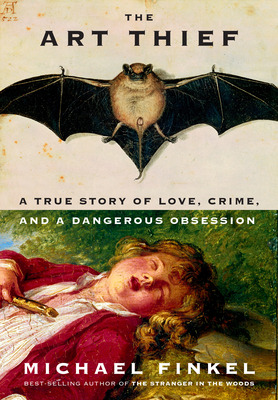
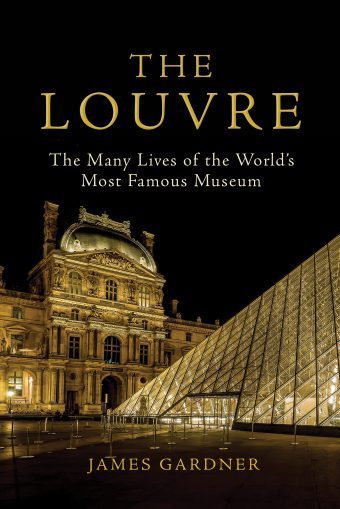
Nonfiction Thursday: Art History
Hands of Time by Rebecca Struthers
Timepieces have long accompanied us on our travels, from the depths of the oceans to the summit of Everest, the ice of the arctic to the sands of the deserts, outer space to the surface of the moon. The watch has sculpted the social and economic development of modern society; it is an object that, when disassembled, can give us new insights both into the motivations of inventors and craftsmen of the past, and, into the lives of the people who treasured them.
Hands of Time is a journey through watchmaking history, from the earliest attempts at time-keeping, to the breakthrough in engineering that gave us the first watch, to today – where the timepieces hold cultural and historical significance beyond what its first creators could have imagined. Acclaimed watchmaker Rebecca Struthers uses the most important watches throughout history to explore their attendant paradigm shifts in how we think about time, indeed how we think about our own humanity. From an up-close look at the birth of the fakes and forgeries industry which marked the watch as a valuable commodity, to the watches that helped us navigate trade expeditions, she reveals how these instruments have shaped how we build and then consequently make our way through the world.
A fusion of art and science, history and social commentary, this fascinating work, told in Struthers’s lively voice and illustrated with custom line drawings by her husband and fellow watchmaker Craig, is filled with her personal observations as an expert watchmaker—one of the few remaining at work in the world today. Horology is a vast subject—the “study of time.” This compelling history offers a fresh take, exploring not only these watches within their time, but the role they played in human development and the impact they had on the people who treasured them.
Picasso's War by Hugh Eakin
In January 1939, Pablo Picasso was renowned in Europe but disdained by many in the United States. One year later, Americans across the country were clamoring to see his art. How did the controversial leader of the Paris avant-garde break through to the heart of American culture?
The answer begins a generation earlier, when a renegade Irish American lawyer named John Quinn set out to build the greatest collection of Picassos in existence. His dream of a museum to house them died with him, until it was rediscovered by Alfred H. Barr, Jr., a cultural visionary who, at the age of twenty-seven, became the director of New York’s new Museum of Modern Art.
Barr and Quinn’s shared goal would be thwarted in the years to come—by popular hostility, by the Depression, by Parisian intrigues, and by Picasso himself. It would take Hitler’s campaign against Jews and modern art, and Barr’s fraught alliance with Paul Rosenberg, Picasso’s persecuted dealer, to get Picasso’s most important paintings out of Europe. Mounted in the shadow of war, the groundbreaking exhibition Forty Years of His Art would launch Picasso in America, define MoMA as we know it, and shift the focus of the art world from Paris to New York.
Picasso’s War is the never-before-told story about how a single exhibition, a decade in the making, irrevocably changed American taste, and in doing so saved dozens of the twentieth century’s most enduring artworks from the Nazis. Through a deft combination of new scholarship and vivid storytelling, Hugh Eakin shows how two men and their obsession with Picasso changed the art world forever.
The Art Thief by Michael Finkel
For centuries, works of art have been stolen in countless ways from all over the world, but no one has been quite as successful at it as the master thief Stéphane Breitwieser. Carrying out more than two hundred heists over nearly ten years--in museums and cathedrals all over Europe--Breitwieser, along with his girlfriend who worked as his lookout, stole more than three hundred objects, until it all fell apart in spectacular fashion.
In The Art Thief, Michael Finkel brings us into Breitwieser's strange and fascinating world. Unlike most thieves, he never stole for money, keeping all his treasures in a single room where he could admire them to his heart's content. Possessed of a remarkable athleticism and an innate ability to assess practically any security system, Breitwieser managed to pull off a breathtaking number of audacious thefts. Yet these strange talents bred a growing disregard for risk and an addict's need to score, leading Breitwieser to ignore his girlfriend's pleas to stop--until one final act of hubris brought everything crashing down.
The Louvre by James Gardner
Some nine million people from all over the world flock to the Louvre each year to enjoy its incomparable art collection. Yet few of them are aware of the remarkable history of that place and of the buildings themselves—a fascinating story that historian James Gardner elegantly chronicles in the first full-length history of the Louvre in English.
More than 7,000 years ago, men and women camped on a spot called Le Louvre for reasons unknown; a clay quarry and a vineyard supported a society there in the first centuries AD. A thousand years later, King Philippe Auguste of France constructed a fortress there in 1191, just outside the walls of a city far smaller than the Paris we know today. Intended to protect the capital against English soldiers stationed in Normandy, the fortress became a royal residence under Charles V two centuries later, and then the monarchy’s principal residence under the great Renaissance king François I in 1546.
It remained so until 1682 when Louis XIV moved his entire court to Versailles. Thereafter the fortunes of the Louvre languished until the tumultuous days of the French Revolution when, during the Reign of Terror in 1793, it first opened its doors to display the nation’s treasures. Ever since—through the Napoleonic era, the Commune, two World Wars, to the present—the Louvre has been a witness to French history, and expanded to become home to a legendary collection, including such masterpieces as the Mona Lisa and Venus de Milo, whose often-complicated and mysterious origins form a spectacular narrative that rivals the building’s grand stature.
#art history#art#nonfiction#nonfiction reads#nonfiction books#library books#reading recommendations#reading recs#book recommendations#book recs#tbr#tbr pile#to read#booklr#book tumblr#book blog#library blog
7 notes
·
View notes
Text

Bishop Michael Bruce Curry (born March 13, 1953) is a bishop who is the 27th and current presiding bishop and primate of The Episcopal Church. He is the first African American to serve as presiding bishop in The Episcopal Church. He was bishop of the Diocese of North Carolina.
He graduated with high honors from Hobart College. He earned an M.Div from the Yale Divinity School, in association with Berkeley Divinity School. He studied at The College of Preachers, Princeton Theological Seminary, Wake Forest University, the Ecumenical Institute at St. Mary’s Seminary, and the Institute of Islamic, Christian, and Jewish Studies.
He has received honorary degrees from the School of Theology-Sewanee, Theological Seminary, Berkeley Divinity School, the Episcopal Divinity School the Seminary of the Southwest, and the Church Divinity School of the Pacific. He was appointed a serving brother of the Order of St John by Elizabeth II. He received the James Parks Morton Interfaith Award.
He was elected the eleventh bishop of the Episcopal Diocese of North Carolina. When he was consecrated at Duke Chapel, he became the first African-American diocesan bishop of the Episcopal Church in the American South.
He served on the board of directors of the Alliance for Christian Media and chaired the board of Episcopal Relief and Development. He had a national preaching and teaching ministry and was a frequent speaker at services of worship and conferences around the country.
He was active in issues of social justice, speaking out on immigration policy and marriage equality. He instituted a network of canons, deacons, and youth ministry professionals to support preexisting ministries in local congregations. He led the Diocese of North Carolina to focus on the Millennium Development Goal to buy malaria nets that saved over 100,000 lives.
He served as the officiant for the state funeral of Senator John McCain. He officiated at the funeral of George H.W. Bush. He delivered a sermon-like address at “The Spirit of Apollo” program organized by the National Air and Space Museum. He spoke at the wedding of Prince Harry and Meghan Markle. #africanhistory365 #africanexcellence
2 notes
·
View notes
Text
Today's Black History Month illustration is of Henry Ossawa Tanner (1859-1937), the first Black painter to gain international acclaim for his depiction of landscapes and biblical themes.

Tanner was born in 1859 in Pittsburgh, Pennsylvania. He was the first of nine children born to Sarah Elizabeth Miller, a formerly enslaved woman who escaped her enslavers via the Underground Railroad, and Benjamin Tucker Tanner, an African Methodist Episcopal (AME) Bishop.
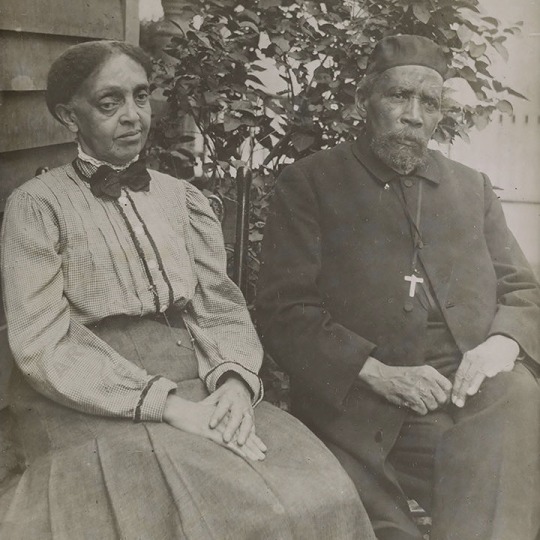
His middle name comes from the town Osawatomie, Kansas, where the abolitionist John Brown started his anti-slavery campaign.
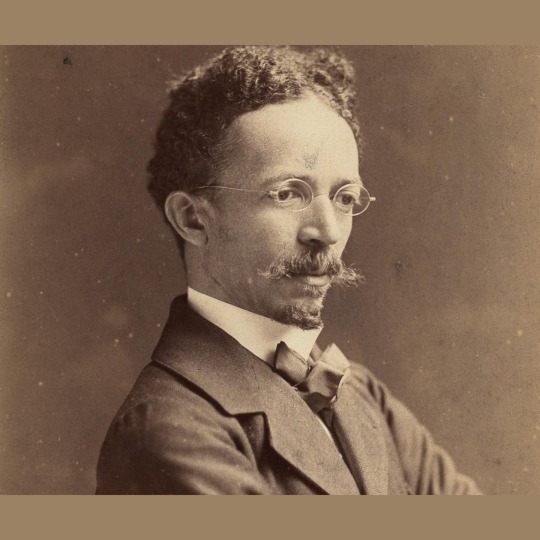
When Tanner was young, the Tanner family moved to Philadelphia. While in Philly, he attended the Robert Vaux School, one of the few Black schools that offered a liberal arts education. Despite his father objecting, Tanner decided he wanted to become a painter when he was 13. He began his art career in 1876 by painting harbour scenes, landscapes, and animals from the Philadelphia Zoo.
After self-study, in 1880, he enrolled at Philadelphia’s prestigious Pennsylvania Academy of the Fine Arts (PAFA) where he was the only black student. Tanner made many connections among the artists and became a favorite of his teacher Thomas Eakins, one of the most important artists in American art history.
In 1888, Tanner secured a teaching position at Clark University in Atlanta with the help of Joseph C. Hartzell, a bishop from Cincinnati, Ohio. In 1890, Hartzell arranged an exhibition of Tanner’s works in Cincinnati, but when none of the paintings sold, Hartzell purchased Tanner’s entire collection.
The money from Hartzell’s purchase allowed Tanner to travel to Paris in 1891 and enroll at the Academy Julian. During this time, he made Paris home because he felt less affected by prejudice.

His greatest early work depicted Black people and tender moments. His most famous painting, “The Banjo Lesson” where an older man was teaching a young boy how to play the banjo was created while visiting family in Philly in 1893.

By 1894, his paintings were critically admired in the US and in Europe. In 1899, he created one of his most famous works, “Nicodemus Visiting Jesus,” which won PAFA’s Lippincott Prize in 1900. Through the rest of his life, he shifted focus to religious scenes and continued to receive praise and honors for his work.


He was named honorary chevalier of the Order of Legion Honor (France’s most distinguished award) in 1923. In 1927, Tanner was made a full academician of the National Academy of design, becoming the first Black person to receive the distinction.
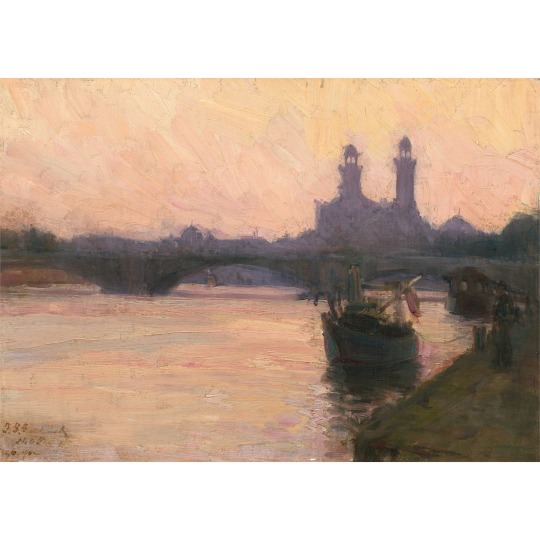
After Tanner’s death in Paris in 1937, his name recognition declined until 1969 when the Smithsonian in Washington DC exhibited a few of his works. This exhibition was the first major solo exhibition of a Black artist in the United States.

In 1991, the Philadelphia Museum of Art assembled a touring exhibition of his work, sparking a new wave of interest.

Side note: The Tanner House is on 2908 W Diamond St in North Philadelphia (Strawberry Mansion). It gained recognition as a National Historic Landmark in 1976, but it fell into disrepair. They’re still trying to find a long-term non-profit steward, but the temporary local fiduciary is the Preservation Alliance for Greater Philadelphia. To donate to the Tanner House Campaign, reach out to the Preservation Alliance.
I’ll be back on Monday with another illustration and story!
#henry ossawa tanner#black painters#black paintings#black history month 2023#black history 365#black history facts#artists on tumblr#illustrators on tumblr
17 notes
·
View notes
Text
Events 2.20 (before 1940)
1339 – The Milanese army and the St. George's (San Giorgio) Mercenaries of Lodrisio Visconti clash in the Battle of Parabiago; Visconti is defeated. 1472 – Orkney and Shetland are pawned by Norway to Scotland in lieu of a dowry for Margaret of Denmark. 1521 – Juan Ponce de León sets out from Spain for Florida with about 200 prospective colonists. 1547 – Edward VI of England is crowned King of England at Westminster Abbey. 1685 – René-Robert Cavelier establishes Fort St. Louis at Matagorda Bay thus forming the basis for France's claim to Texas. 1792 – The Postal Service Act, establishing the United States Post Office Department, is signed by United States President George Washington. 1798 – Louis-Alexandre Berthier removes Pope Pius VI from power. 1813 – Manuel Belgrano defeats the royalist army of Pío de Tristán during the Battle of Salta. 1816 – Rossini's opera The Barber of Seville premieres at the Teatro Argentina in Rome. 1824 – William Buckland formally announces the name Megalosaurus, the first scientifically validly named non-avian dinosaur species. 1835 – The 1835 Concepción earthquake destroys Concepción, Chile. 1846 – Polish insurgents lead an uprising in Kraków to incite a fight for national independence. 1864 – American Civil War: Battle of Olustee: The largest battle fought in Florida during the war. 1865 – End of the Uruguayan War, with a peace agreement between President Tomás Villalba and rebel leader Venancio Flores, setting the scene for the destructive War of the Triple Alliance. 1872 – The Metropolitan Museum of Art opens in New York City. 1877 – Tchaikovsky's ballet Swan Lake receives its premiere at the Bolshoi Theatre in Moscow. 1901 – The legislature of Hawaii Territory convenes for the first time. 1905 – The U.S. Supreme Court upholds the constitutionality of Massachusetts's mandatory smallpox vaccination program in Jacobson v. Massachusetts. 1909 – Publication of the Futurist Manifesto in the French journal Le Figaro. 1913 – King O'Malley drives in the first survey peg to mark commencement of work on the construction of Canberra. 1920 – An earthquake kills between 114 and 130 in Georgia and heavily damages the town of Gori. 1931 – The U.S. Congress approves the construction of the San Francisco–Oakland Bay Bridge by the state of California. 1931 – An anarchist uprising in Encarnación, Paraguay briefly transforms the city into a revolutionary commune. 1933 – The U.S. Congress approves the Blaine Act to repeal federal Prohibition in the United States, sending the Twenty-first Amendment to the United States Constitution to state ratifying conventions for approval. 1933 – Adolf Hitler secretly meets with German industrialists to arrange for financing of the Nazi Party's upcoming election campaign. 1935 – Caroline Mikkelsen becomes the first woman to set foot in Antarctica. 1939 – Madison Square Garden Nazi rally: The largest ever pro-Nazi rally in United States history is convened in Madison Square Garden, New York City, with 20,000 members and sympathizers of the German American Bund present.
2 notes
·
View notes
Note
Top five butterflies?
Blue Morpho

{via William Warby, flickr} Native to the tropical forests of Latin America from Mexico to Colombia. Adults spend most of their time on the forest floor and in the lower shrubs and trees of the understory with their wings folded. However, when looking for mates, the blue morpho will fly through all layers of the forest. {via Rainforest Alliance}
2. Painted Lady

{via Huffington Post} The most widespread butterfly species found on the planet, occupying all continents except Antarctica and Australia! {via University of Colorado, Museum of Natural History} My mom and I raised these for a science project when I was in elementary school, and they've held a special place in my heart since.
3. Eastern Tiger Swallowtail

{via Fine Art America} Male Eastern Tiger Swallowtails are always yellow, while females may be yellow or black. Females have a splash of iridescent blue wash on their tales, while males do not. {via Butterflies at Home} We see these fellas a lot near us.
4. Black Swallowtail

{via All of Nature} A common butterfly found throughout much of North America. Papilio polyxenes is one of many species in the largest genus in the butterfly family Papilionidae (swallowtails). It ranges from southern Canada to northern South America, but is most common east of the Rocky Mountains. There are several subspecies that occur in Mexico, Central America and South America. It has been designated as the state butterfly of Oklahoma. Adult black swallowtails are usually found in open areas, such as fields, meadows, parks, wetlands, prairies and sunny backyards. {via Wisconsin Horticulture}
5. Monarch

{via Wikipedia} The eastern North American monarch population is notable for its annual southward late-summer/autumn instinctive migration from the northern and central United States and southern Canada to Florida and Mexico. During the fall migration, monarchs cover thousands of miles, with a corresponding multigenerational return north in spring. The western North American population of monarchs west of the Rocky Mountains often migrates to sites in southern California, but individuals have been found in overwintering Mexican sites, as well. In 2009, monarchs were reared on the International Space Station, successfully emerging from pupae located in the station's Commercial Generic Bioprocessing Apparatus. {via Wikipedia}
4 notes
·
View notes